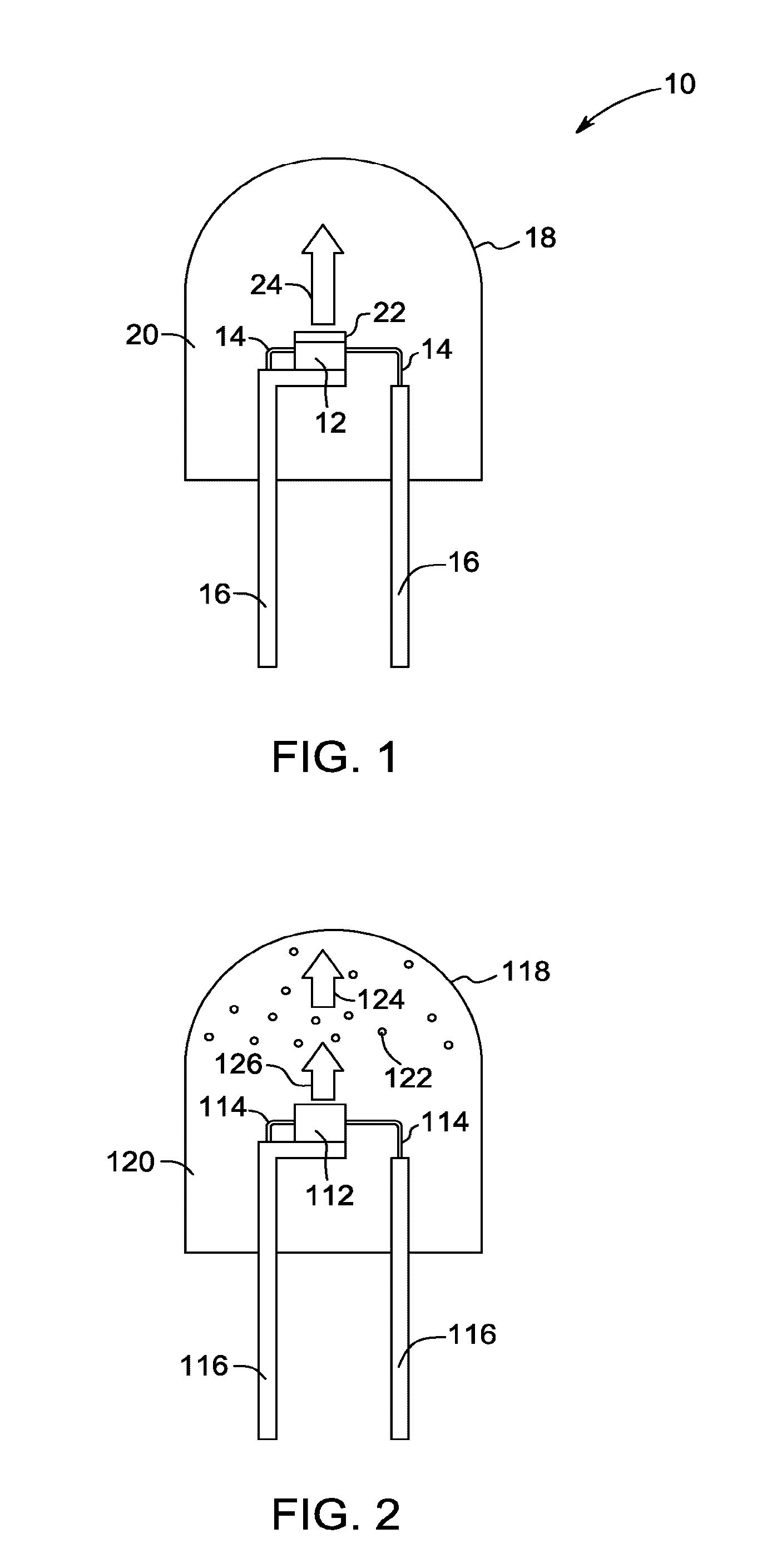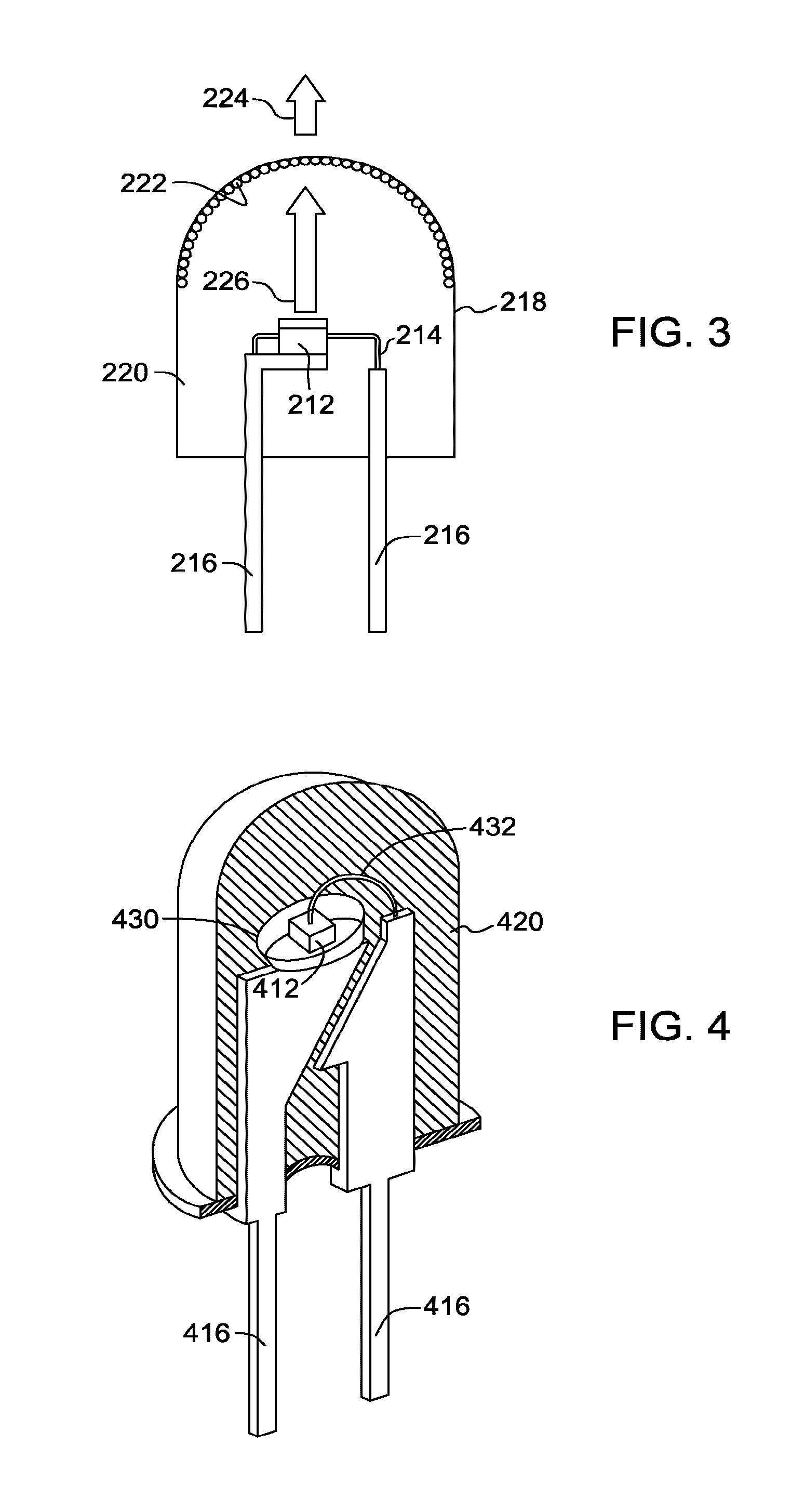Red-emitting phosphors and associated devices
a technology of red-emitting phosphors and associated devices, which is applied in the direction of semiconductor devices, luminescent compositions, chemistry apparatus and processes, etc., can solve the problems of reducing the size of particles, cri of lighting systems using mnsup>4+/sup>, and high cri of fluoride hosts, so as to reduce the size of particles
- Summary
- Abstract
- Description
- Claims
- Application Information
AI Technical Summary
Benefits of technology
Problems solved by technology
Method used
Image
Examples
example 1
[0112]15 g of manganese-doped potassium fluorosilicate (PFS:Mn) precursor, K2SiF6:Mn4+ having particles of D50 particle size of 46 microns and containing 0.76 wt % Mn based on total weight of the precursor material, was added to 250 milliliters NALGENE bottle containing dry milling media and sealed in the bottle. The bottle was placed on a roller mill for 15 minutes. The milled precursor was removed from the bottle, which had D50 particles of 16 microns. The milled precursor particles were then placed in a furnace chamber. The furnace chamber was evacuated and was filled with an atmosphere containing 20% F2 / 80% N2. The chamber was then heated up to 540° C. After annealing the precursor for 8 hours, the chamber was cooled to room temperature. The fluorine nitrogen mixture was evacuated; the chamber was filled and purged several times with nitrogen to ensure the complete removal of fluorine gas before opening the chamber. The annealed PFS powder was then treated with a saturated solut...
example 2
[0113]15 g of manganese-doped potassium fluorosilicate (PFS:Mn) precursor, K2SiF6:Mn4+ having particles of D50 particle size of 46 microns and containing 0.76 wt % Mn based on total weight of the precursor material, was added to 250 milliliters NALGENE bottle containing dry milling media and sealed in the bottle. The bottle was placed on a roller mill for 15 minutes. The milled precursor was removed from the bottle, which had D50 particles between 24 microns and 30 microns. Table 2 shows that after milling the QE of the PFS:Mn precursor was decreased. The milled precursor particles were then placed in a furnace chamber. The furnace chamber was evacuated and was filled with an atmosphere containing 20% F2 / 80% N2. The chamber was then heated up to 540° C. After annealing the precursor for 8 hours, the chamber was cooled to room temperature. The fluorine nitrogen mixture was evacuated; the chamber was filled and purged several times with nitrogen to ensure the complete removal of fluor...
PUM
| Property | Measurement | Unit |
|---|---|---|
| temperature | aaaaa | aaaaa |
| particle size distribution | aaaaa | aaaaa |
| particle size distribution | aaaaa | aaaaa |
Abstract
Description
Claims
Application Information
 Login to View More
Login to View More - R&D
- Intellectual Property
- Life Sciences
- Materials
- Tech Scout
- Unparalleled Data Quality
- Higher Quality Content
- 60% Fewer Hallucinations
Browse by: Latest US Patents, China's latest patents, Technical Efficacy Thesaurus, Application Domain, Technology Topic, Popular Technical Reports.
© 2025 PatSnap. All rights reserved.Legal|Privacy policy|Modern Slavery Act Transparency Statement|Sitemap|About US| Contact US: help@patsnap.com



